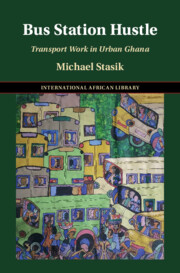Book contents
- Bus Station Hustle
- The International African Library
- Bus Station Hustle
- Copyright page
- Contents
- Figures
- Maps
- Acknowledgements
- Maps
- 1 Introduction
- 2 From the Lorry Age to the Age of Hustle
- 3 Niche Economy Involution
- 4 Loading
- 5 Station Rhythm Enskilment
- 6 The Labours of Waiting
- 7 The Valorisation of Delay
- 8 Conclusion
- Book part
- References
- Index
- Series page
- References
References
Published online by Cambridge University Press: 09 February 2025
- Bus Station Hustle
- The International African Library
- Bus Station Hustle
- Copyright page
- Contents
- Figures
- Maps
- Acknowledgements
- Maps
- 1 Introduction
- 2 From the Lorry Age to the Age of Hustle
- 3 Niche Economy Involution
- 4 Loading
- 5 Station Rhythm Enskilment
- 6 The Labours of Waiting
- 7 The Valorisation of Delay
- 8 Conclusion
- Book part
- References
- Index
- Series page
- References
- Type
- Chapter
- Information
- Bus Station Hustle , pp. 185 - 198Publisher: Cambridge University PressPrint publication year: 2025
- Creative Commons
- This content is Open Access and distributed under the terms of the Creative Commons Attribution licence CC-BY-NC 4.0 https://creativecommons.org/cclicenses/

